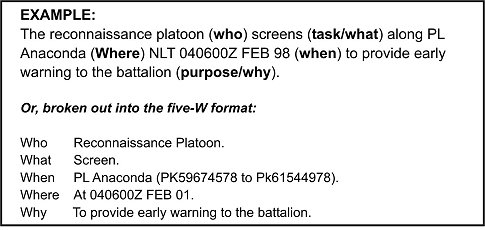Nov 14, 2014
I had two quite different experiences this week at opposite ends of the country but both reminded me about the power of purpose.
I was honored to be included the Veterans assembly at our childrens’ school and humbled to be in the presence of men and women who have done and seen things that few of us can imagine. As we talked about our experiences one theme was evident; the purpose of what they had been doing was clear to them – and still is, in some cases decades later. Without prompting they still talked about why they had served, sometimes with a tear in their eye.
Our discussions were about a ‘big’ purpose; our freedom or that of an ally. But there is much more to the importance of asking ‘why’ in military operations and in this there are powerful lessons for any organization.
Understanding ‘why’ and having a clear and strong purpose helps improve agility, alignment, accountability, motivation and resilience.
Agility
The military puts great emphasis on describing why an action is being taken. ‘Why’ is included in mission statements and is central to the concept of mission command; what allows commanders at every level to take initiative in a fluid environment when quick decisions are critical to success.
Do those last 13 words look like desired behavior in your organization?
Alignment
You often hear the phrase ‘pulling in different directions’. Whether two people, internal teams or with an external partner the imagery is clear; time and energy is being unnecessarily wasted.
Strategic and tactical decisions made every day by leaders all the way up and down an organization need to be in alignment with, and supporting, the organization’s mission. By crafting mission statements at each level of an organization (even down to the person) that include the ‘why’, the alignment, or misalignment, of each group’s mission can quickly be seen and adjusted if necessary.
Accountability
A clear mission statement allows for accountability and the measurement of success. Peers, bosses, subordinates, internal partners, even external partners, can all look at a mission statement, supported by a few simple operational metrics, and ask themselves and each other ‘is this what we did today?’ and ‘how are we doing?’.
Motivation
As I described in my blog about lessons from the American War of Independence, an outgunned force will often overcome the odds through, amongst other things, having a stronger purpose than that of their opponent. A team or organization that understands ‘why’ will outperform others that do not posess a clear purpose.
Resilience
We all hit speed bumps from time to time. Sometimes we will run into a wall; or a speed bump will feel like a wall at the time. (If you don’t, then you’re walking not running.) Resilience is less about not getting knocked down in the first place; it is more about how quickly you get back up and whether you are stronger or weaker when you do. The wall or speed bump may destroy the ‘how’ but the ‘why’ will still be intact. “Can we still achieve our mission in some other way?” should be your first question as you dust yourself off.
But you do not need to be fighting a war to have a strong purpose.
The second experience I had this week that made me think of the importance of 'purpose' was in Seattle. I was walking to my morning meeting through the Pike Place market and was drawn to a crowd at the Pike Place Fish Market. I was not sure why so many people would be buying fish at this time of day but discovered that most people were not there to buy fish, they were there to watch the exuberant performance of Scott Smith and his fellow fish mongers who were shouting and, literally, throwing large fish at each other. I got chatting to Scott who spoke passionately about why they put so much energy into performing for people who may have no intention of buying fish. He explained that their purpose [his words] was to create an experience for themselves and for the crowd, knowing that anyone who does want to buy fish is far more likely to seek them out. And they do - from all over the world. And they have fun. Maybe no coincidence that two of the team are veterans?
We are often told, or feel, that there is an imbalance or friction between what we do at work and the purpose and meaning that we strive for in our lives. But when boiled down to first principles – such as ‘to help others’, ‘to solve problems’, ‘to have fun’, ‘to be part of something’ – these turn out to be exactly the behavior of the people at many of the world’s most successful companies – big and small.
What is your and your organization’s ‘purpose’, their ‘why’?
What is your and your organization’s ‘mission’?
How are these expressed?
And how are they connected?
------------------
Photo credits:
Mission statement example: Globalsecurity.org
Pike Place fish market: unknown passer by.

